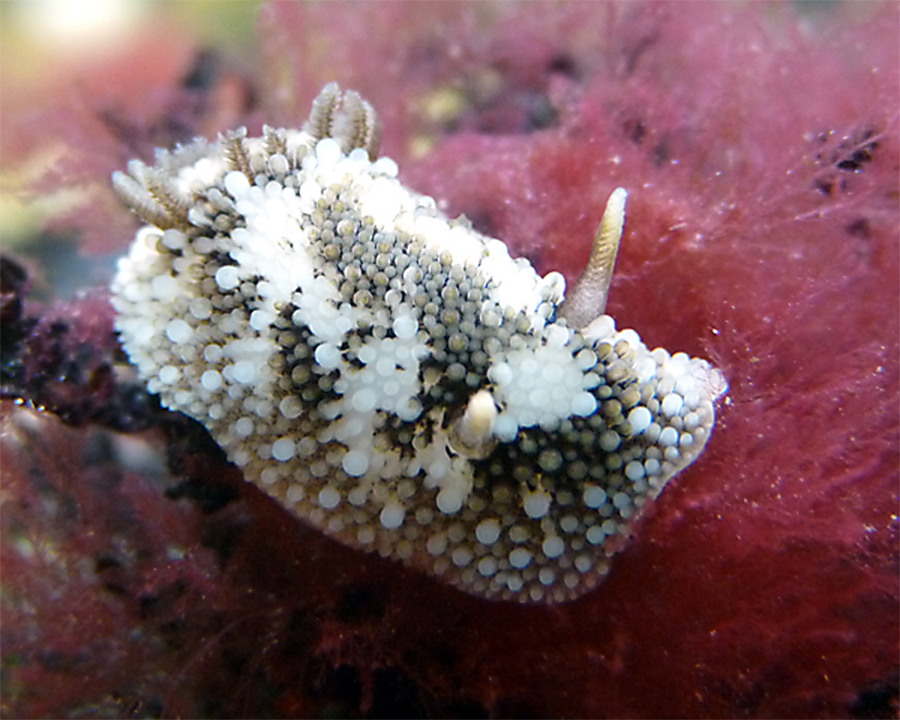Author: Hailey Surgin
Common Name: Barnacle Eating Dorid, Rough Mantled Dorid
Scientific Name: Onchidoris bilamellata
Size Range: up to 2cm to 3cm in length
Identifying Features: Most barnacle eating dorids have a mottled grey and brown colour to them. Their mantle, which is their outer layer of tissue, has a brown and white pattern on it. Young dorids, and some mature adults, may be completely white. Towards the head are two white ringed tentacles called rhinophores. They have club-shaped tubercles over their body and have a circular gill plume near their posterior.
Habitat: O. bimlamellata are quite common on rocky shorelines in the low intertidal and subtidal regions, though they can be found up to 20m deep. At certain times of the year beachcombers may find large numbers of them congregating together under rocks.

Food: The barnacle eating dorid, as mentioned in it’s name, really only eats one thing; barnacles, and primarily those belonging to the genus Balanus. The way that they eat the barnacles is by drilling into them with a specialized radula and then sucking out the soft parts.
Predators: There is little information about specific predators of this species. However, when they are disrupted or disturbed, they secrete acids that act as deterrents.
Life Cycle: Most nudibranchs are simultaneous hermaphrodites. A simultaneous hermaphrodite is an organism that can mate with any other mature male or female of their species as they have both male and female reproductive organs. When Onchidoris bilamellata reproduces, they come together in large groups to copulate, passing sperm to each other. They lay a ribbon of eggs in shallow water that will evetually hatch as a veliger larvae. After a period of time the veliger larvae with metamorphose into the yound adult form and settle on rocks near barnacles.
References
British Marine Life. Worms and Slugs. British Marine Life. Retrieved May 27th 2011
http://www.oceaneyephoto.com/photo_5352444.html#photos_id=5352444
Edwards, Rose(2004). A sea slug- onchidoris bilamellata. Marine life Information Network. Retrieved May 29th 2011 http://www.marlin.ac.uk/speciesinformation.php?speciesID=3958
North Island Explorer. Barnacle Eating Nudibranch. Marine Life Guide to North Vancouver Island. Retrieved May 25th 2011 http://northislandexplorer.com/molluscs/barnacleeatingnudibranch.htm
Nudibranch Animals National Geographic Wild Retrieved June 3rd 2011 http://animals.nationalgeographic.com/animals/invertebrates/nudibranch/?source=A-to-Z
Smith, S.E (2003) Wise Geek Retrieved June 5th 2011
http://www.wisegeek.com/what-are-simultaneous-hermaphrodites.htm
Photograph by : D. Young
